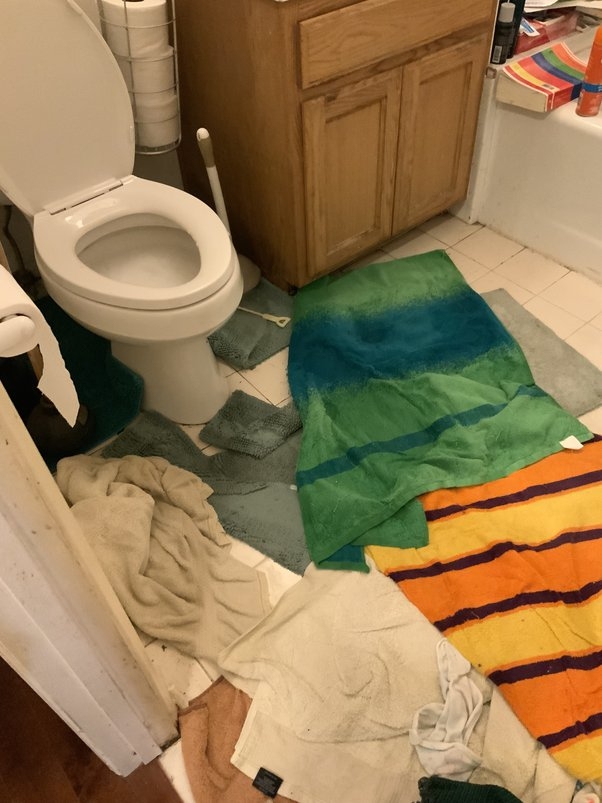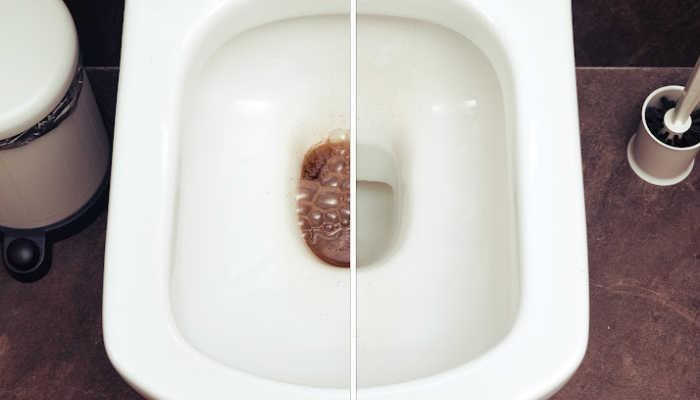What to do if i accidentally put liquid plumber in toilet?
Have you ever accidentally poured the wrong liquid down your toilet? It’s a common mistake that can happen to anyone. Specifically, have you ever put Liquid Plumber in your toilet instead of regular toilet cleaner? If so, you may be panicking about the potential damage to your plumbing system.
Liquid Plumber is a powerful drain cleaner that can dissolve clogs and blockages in your pipes. However, it’s not designed to be used in your toilet. In fact, using it in your toilet can cause serious damage to your plumbing system and even create a hazardous situation in your home.
If you find yourself in this situation, it’s important to act quickly to minimize the damage. In this article, we’ll discuss what to do if you accidentally put Liquid Plumber in your toilet and how to prevent this mistake from happening again in the future.
What is Liquid Plumber?
Liquid Plumber is a well-known brand of chemical drain cleaners that can be used to unclog drains, including toilets, sinks, and shower drains. This product uses powerful chemicals to dissolve the buildup of hair, grease, soap scum, and other debris that can accumulate in pipes over time and cause stubborn clogs.

Liquid Plumber is available in different formulas, each one designed to tackle specific types of clogs. For instance, the company offers a Max Build-Up Remover formula that is particularly effective at removing tough buildup that accumulates over time. The company also offers several other formulas, including a Gel formula that clings to pipes to unclog hair and soap scum, and a Pro-Strength formula that is designed to tackle the toughest of clogs.
When using Liquid Plumber, it’s important to read the instructions carefully and take any recommended safety precautions. This is because Liquid Plumber contains harsh chemicals that can be dangerous if they come into contact with skin or eyes, or if they are ingested. To avoid any accidents, always wear rubber gloves when handling the product and ensure the room is well-ventilated to avoid inhaling any toxic fumes.
While Liquid Plumber can be an effective drain cleaner, it’s important to understand that it’s not always the best solution for every clog. For example, if the clog is caused by a foreign object, such as a toy or feminine product, using a chemical drain cleaner may not be effective. Additionally, if the clog is located deep in the plumbing system or caused by damage to the pipes, calling in a professional plumber may be necessary.
Why You Should Never Put Liquid Plumber in a Toilet?
If you’ve ever experienced a clogged toilet, you know it can be a frustrating and unpleasant situation. And while it may be tempting to reach for a bottle of Liquid Plumber to quickly resolve the issue, it’s important to understand why you should never put this product down your toilet.
First and foremost, Liquid Plumber is a harsh chemical drain cleaner that is designed to break down and dissolve various types of clogs in your pipes. However, the chemicals in these products can also cause damage to your plumbing system, particularly if they are used incorrectly or in the wrong location. When you pour Liquid Plumber down your toilet, it can react with the standing water and human waste to create a chemical reaction that can damage the pipes, potentially leading to leaks, corrosion, or even a complete breakdown of your plumbing system.
And it’s not just your pipes that can be affected. The harsh chemicals in these drain cleaners can also release toxic fumes that can be harmful to breathe in, particularly if you are working in a small and poorly ventilated bathroom. Exposure to these fumes can lead to respiratory problems, dizziness, and even unconsciousness in severe cases.
So, if you find yourself with a clogged toilet, what should you do instead of using Liquid Plumber? There are several alternatives, including using a plunger to try and dislodge the blockage, using a drain snake to remove any solid objects, or pouring hot water down the toilet bowl to help break down the clog. You can also try using a natural solution, such as white vinegar or liquid dish soap, to help dissolve the blockage without causing any damage to your plumbing system or exposing yourself to harmful chemicals.
Steps to Take If You Accidentally Put Liquid Plumber in the Toilet
Accidentally pouring Liquid Plumber down the toilet can happen to anyone. But what should you do if it occurs? The harsh chemicals in this drain cleaner can cause severe damage to your plumbing system and even harm your health if it ignites a chemical reaction. Here are the steps to take if you find yourself in this situation:
Step 1: Stop Flushing
The initial and most important step is to stop flushing the toilet, as it may lead to a chemical reaction. The standing water in the bowl combined with the clog and Liquid Plumber can potentially cause a hazardous chemical reaction that can destroy your pipes. If you’ve already flushed the toilet, turn off the water supply by twisting the valve that can be found next to the bowl.
Step 2: Protect Yourself
The chemicals in Liquid Plumber can emit toxic fumes that can cause respiratory problems, dizziness, and severe health issues. Therefore, it’s crucial to protect yourself by putting on rubber gloves, opening windows, and turning on any fans in your bathroom. If you start feeling unwell, immediately leave the room and seek medical attention.
Step 3: Remove the Liquid Plumber
For your safety and to avoid causing damage to your plumbing system, you must remove the Liquid Plumber from the toilet bowl. Start by pouring cold water into the bowl to dilute the drain cleaner as much as possible. Then use a bucket to scoop out the liquid and dispose of it in a sealed container according to the manufacturer’s instructions.
Step 4: Unclog the Toilet
Once you have removed as much Liquid Plumber as possible from the bowl, it’s time to unclog the toilet. You can start by pouring hot water down the bowl to soften the clog, followed by using a plunger to try and dislodge the blockage. Avoid using a flange plunger, as it can potentially damage the toilet.
If the clog remains stubborn, you can try using a drain snake to break apart any solid objects. If the issue persists, it may be best to call a professional plumber to avoid causing further damage to your plumbing system.
Risks Associated with Chemical Drain Cleaners
Chemical drain cleaners, such as Liquid Plumber and Drano, are popular solutions for clearing clogged drains. However, these products can pose significant risks to your health and your plumbing system. Let’s take a closer look at the risks associated with chemical drain cleaners.

Toxic Fumes
When you pour a chemical drain cleaner down your drain, it can emit toxic fumes that are harmful to your health. These fumes can cause respiratory problems, including coughing, wheezing, and shortness of breath. In severe cases, they can even cause chemical burns on your skin or in your eyes.
Damage to Pipes
Chemical drain cleaners are harsh substances that can eat away at your pipes over time. This is especially true if your pipes are made of PVC, which is a type of plastic that is commonly used in drain pipes. The chemicals in drain cleaners can weaken the PVC and cause it to crack or break, leading to costly plumbing repairs.
Environmental Risks
When you use chemical drain cleaners, the chemicals are not only harmful to your health but also to the environment. These substances can contaminate groundwater, which can have a negative impact on wildlife and other living organisms. When you dispose of chemical drain cleaners, it’s crucial to follow the manufacturer’s instructions carefully to minimize the risk of environmental damage.
DIY Risks
Using chemical drain cleaners also comes with DIY risks. If you’re not careful, you can end up damaging your plumbing system or injuring yourself. For example, if you use too much drain cleaner or leave it in your pipes for too long, it can cause a chemical reaction that can release toxic fumes or even lead to a plumbing emergency.
Alternative Solutions
Fortunately, there are alternative solutions to chemical drain cleaners that are safer for your health and plumbing system. For example, you can use a plunger or a drain snake to clear clogs. You can also try using household items such as white vinegar and hot water, or a mix of baking soda and vinegar, to break down the clog naturally.
Meet Lila Robinson, an expert in the world of plumbing with a talent for delivering valuable insights and captivating articles on an array of plumbing topics. With years of experience handling complicated plumbing issues, Lila has become a go-to resource for homeowners and businesses alike.
Packing vast knowledge in plumbing tools and science, Lila creates a sense of community on her blog and social media accounts, engaging with readers from all walks of life. Her writing style is authentic, unique, and engaging, and she has an exceptional ability to break complex concepts into understandable ideas.
If you have encountered a plumbing issue, chances are Lila Robinson has conquered it. Her articles uncover the underlying problems behind some of the most unexpected plumbing problems, from tankless water heater error codes to drain snakes in vents.
Whether you’re a beginner or an experienced plumber, Lila Robinson’s blog has something for you. Follow her social media accounts to keep up-to-date with the latest posts and join the conversation.